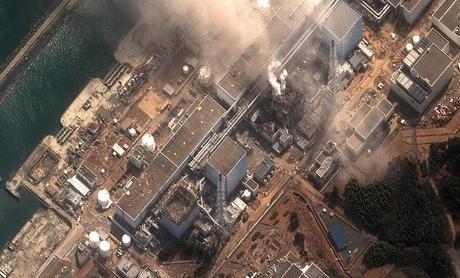 For those readers who know and follow 2nd Green Revolution, you’re probably aware that Justin lived in Japan for a few years and travels there frequently. The recent earthquakes and tsunami give us great pause for thought. These disasters are unforeseeable and devastating. Perhaps one day science will be able to predict earthquakes with some semblance of reliability. Tsunami warning systems are in place, but these “harbor waves” still reek havoc. Despite the misconception held by many, tsunamis are not directly related to climate change. While rising sea levels can exacerbate these disasters, tsunamis are not caused by the changing climate. There has been some evidence that geothermal wells drilled near fault lines have been linked to an increase in tremors. This brings me to the point of this post, renewable energy and natural disasters.
For those readers who know and follow 2nd Green Revolution, you’re probably aware that Justin lived in Japan for a few years and travels there frequently. The recent earthquakes and tsunami give us great pause for thought. These disasters are unforeseeable and devastating. Perhaps one day science will be able to predict earthquakes with some semblance of reliability. Tsunami warning systems are in place, but these “harbor waves” still reek havoc. Despite the misconception held by many, tsunamis are not directly related to climate change. While rising sea levels can exacerbate these disasters, tsunamis are not caused by the changing climate. There has been some evidence that geothermal wells drilled near fault lines have been linked to an increase in tremors. This brings me to the point of this post, renewable energy and natural disasters.
There are some environmental concerns with renewable energy, including the aforementioned geothermal example, dams preventing fish from properly spawning or flooding land to create reservoirs (in addition to dams collapsing, as happened in Japan), and the recent spate over concentrated solar power installations in the desert. However, the major concern here revolves around nonrenewable sources of energy and the fallout from natural disasters. The ongoing nuclear crisis in Japan represents the most recent environmental concern. Damage to these structures from natural or man-made disasters can have far reaching ramifications. For instance, radiation levels may rise to dangerous levels. In addition, when damaged, these large, centralized electricity generators can lead to widespread outages similar to those experienced currently.
Last year in the Bay Area town of San Bruno, a massive explosion rocked the suburb, destroying homes and killing several residents. San Francisco experienced devastating fires after the massive 1906 earthquake as well. Both of these incidents (the explosion and the subsequent fires in 1906) resulted from natural gas eruptions. All of this is not to mention the BP oil spill. While it was not caused by a natural disaster, the spill serves as an example of how a man-made disaster can ensue from an over reliance on technology and nonrenewable resources.
This is not to say that these technologies have no place in our energy portfolio, but it is important to realize that non-combustible renewables can help play a role in the maintenance of providing energy in times of crisis. Decentralized power generation, like rooftop photovoltaic arrays or solar thermal technology can help bridge the gap.
[Image source]



COMMENTS ( 1 )
posted on 07 May at 15:41
god please them